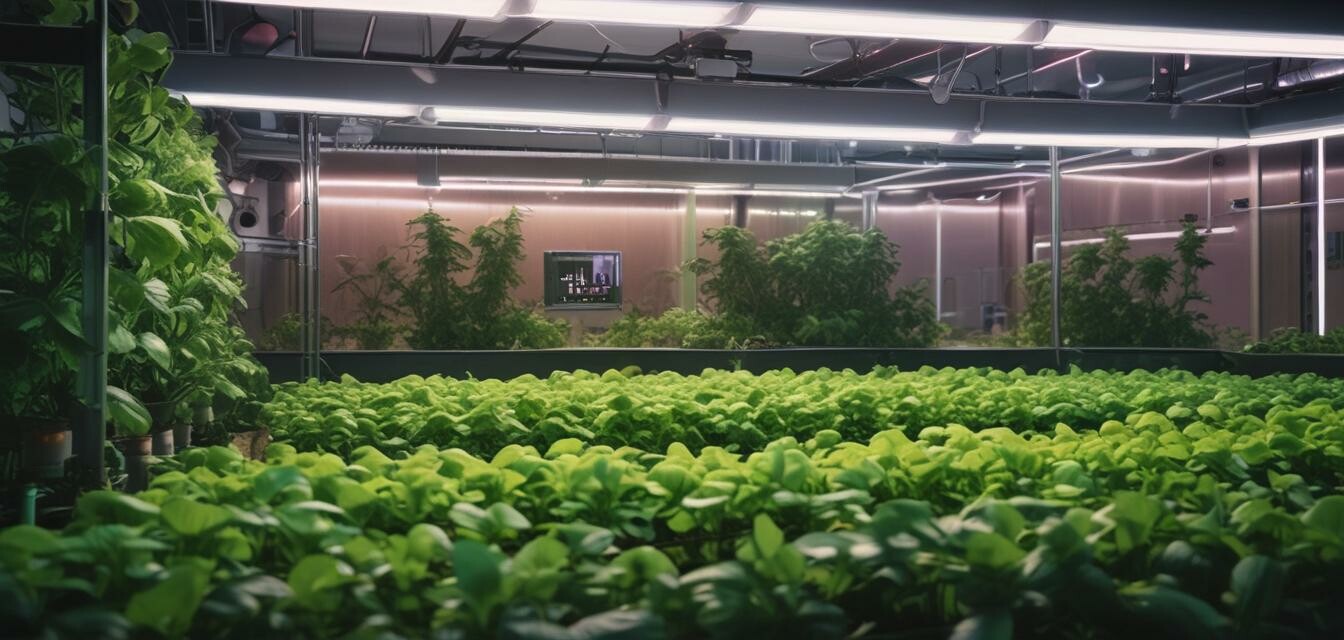
Hydroponic trends to watch in 2025
As we move towards 2025, the hydroponic gardening industry is set to evolve rapidly. Understanding these trends can help both amateur and professional gardeners adapt to the changing landscape of this innovative growing method. In this article, we'll explore key advancements in technology and shifts in consumer preferences that will shape the future of hydroponics.
Key takeaways
- Increased adoption of automated hydroponic systems.
- Growing focus on sustainable practices.
- Personalized gardening experiences through smart technology.
- Expanding market for home hydroponic setups.
- Increase in nutrient-rich solutions tailored to specific crops.
The evolution of hydroponic technology
Technological advancements have been the backbone of hydroponic gardening. Innovations not only increase crop yields but also enhance the user experience. Here are some trends to keep an eye on:
| Technology | Description |
|---|---|
| Automated Hydroponic Systems | Systems that autonomously monitor and adjust conditions like pH, nutrient levels, and light, making it easier to maintain optimal growth conditions. |
| AI-Driven Solutions | Artificial intelligence used for analyzing growth patterns and optimizing resources, allowing for predictive growth modeling. |
| Hydroponic Monitoring Apps | Applications that provide real-time data on nutrient levels, light conditions, and water usage, enabling growers to make informed decisions. |
Automated Hydroponic Systems
As homeowners seek to simplify their gardening efforts, automated hydroponic systems are gaining popularity. These systems allow users to grow plants with minimal manual intervention. Features such as smartphone connectivity and automated nutrient delivery make these setups quite appealing.
AI-driven solutions
Using AI in hydroponics allows for more precise gardening. AI can analyze data collected from various sensors and make recommendations to improve plant health and yield. This technology significantly reduces the burden on the gardener.
Sustainable practices in hydroponic gardening
The trend towards sustainability continues to rise, impacting the hydroponic industry significantly. In 2025, you can expect:
- Increased use of renewable energy sources in hydroponic farms.
- More emphasis on organic nutrient solutions.
- Innovative water conservation techniques to minimize waste.
Renewable energy adoption
Solar panels and wind turbines are becoming standard in large-scale hydroponic operations. This shift not only reduces operational costs but also boosts the sustainability profile of hydroponic farming.
Organic nutrient solutions
As consumers become more health-conscious, there is a higher demand for organic produce. This has led to the development of organic nutrient solutions that are eco-friendly and cater to this growing market segment.
Consumer preferences shifting
In 2025, consumer habits surrounding food production will continue to change. Key areas to watch include:
| Preference | Trend |
|---|---|
| Local Produce | Consumers are favoring locally grown produce over imported goods, driving interest in home hydroponic systems. |
| Customization | There is a rising demand for personalized gardening solutions, allowing users to grow specific plants that meet their unique taste and dietary preferences. |
Growing interest in home setups
The pandemic has shifted many consumers’ focus towards self-sufficiency. As a result, home hydroponic systems that can easily fit into small spaces are increasingly popular, providing an accessible way to grow fresh produce indoors all year round.
Customized gardening experiences
With technology allowing for more tailored solutions, gardeners are expressing interest in customizable setups that cater to their preferences—be it the type of plants grown or the method of cultivation.
Pros
- Innovative technology enhances productivity.
- Sustainable practices contribute positively to the environment.
- Customized solutions increase user satisfaction.
- Local produce options become more accessible.
Cons
- Initial costs of advanced systems can be high.
- Requires a certain level of tech-savviness.
- Learning curve in managing automated systems.
Conclusion
The future of hydroponic gardening looks promising as technology evolves and consumer preferences shift. By keeping abreast of these trends, gardeners can not only ensure they remain competitive but also contribute positively to the sustainability of food production. Stay informed about the latest advancements by checking our News and Trends section!

